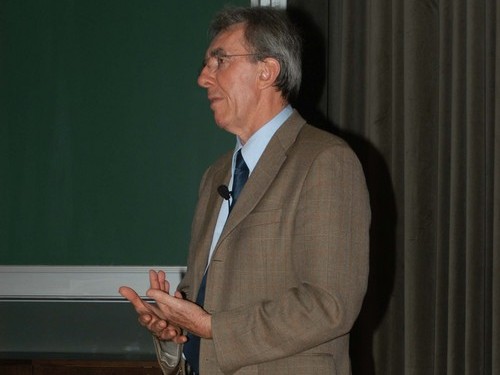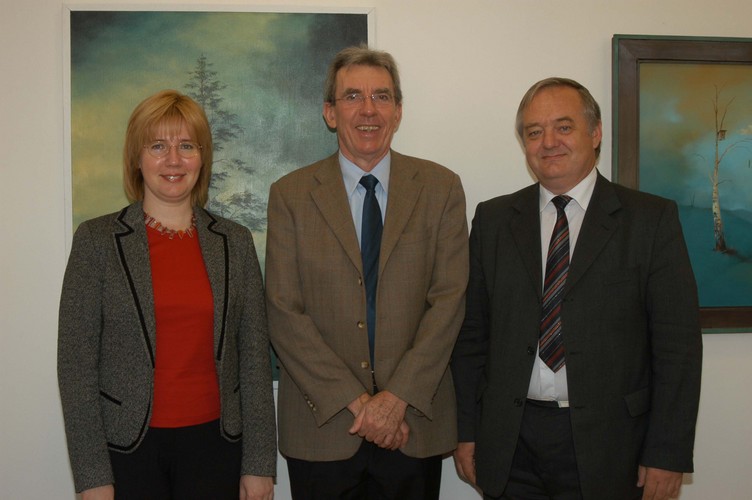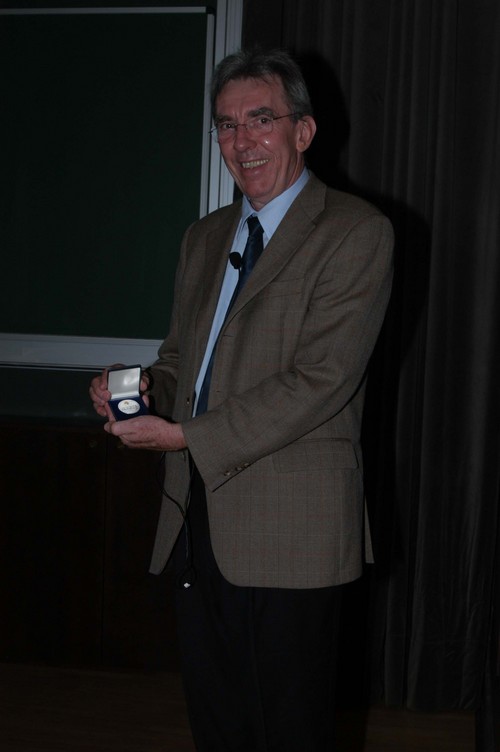
Prof. Jean-Pierre Sauvage (Université Louis Pasteur, Strasbourg, Francie)
Catenanes and Rotaxanes as Molecular Machine Prototypes
Abstrakt
Catenanes (interlocking rings) and knots represent attractive synthetic challenges for molecular chemists. Besides their topological properties, these systems can be regarded as works of art at the nanometre scale. The creation of such complex molecules also demonstrates that synthetic chemistry is now powerful enough to tackle problems whose complexity is sometimes reminiscent of biology, although the elaboration of molecular ensembles displaying properties as complex as biological assemblies is still a long-term challenge.
The field of artificial molecular machines and motors has experienced a spectacular development in the course of the last decade, in relation with biological motors (as mimics) or information storage and processing at the molecular level (toward molecule-based computers). These systems are multicomponent assemblies undergoing large-amplitude geometrical changes or leading to the locomotion of one of the components, under the action of an external stimulus.
A recent example consists of a rotaxane whose motions can be triggered by using an electrochemical signal: the oxidized form (copper(II)) corresponds to a 5-coordinate situation whereas the reduced state (copper(I)) is 4-coordinate. For this electrochemically driven machine, pirouetting of the ring occurs on the millisecond time scale. Another particularly significant example is that of a rod-shaped molecule which can be contracted or stretched at will under the action of a chemical signal. It can thus be regarded as a "nano-muscle", its size varying between 6.5 and 8.5 nm.
A totally different approach is based on dissociative excited states such as the ligand-field state of Ru(bipy)32+ derivatives. New rotaxanes (rings threaded by a molecular axis) and catenanes have been constructed around an octahedral centre (Ru). These systems can be set in motion by sending a photonic signal to the molecule.
Recently, our group has also proposed a transition metal-based strategy for making two-dimensional interlocking and threaded networks. Large cyclic assemblies containing several copper(I) centres could be prepared which open the gate to controlled dynamic two-dimensional systems and membrane-like structures consisting of multiple catenanes and rotaxanes.
Although it is still premature to claim that this new field will become practically important in a short-term prospective, we think it is a very active and conceptually important field of research.
Zdroje
- V. Balzani, M. Venturi, and A. Credi, “Molecular Devices and Machines”, Wiley-VCH, Weinheim, 2003; J.-P. Sauvage, “Molecular Machines and Motors”, Structure and Bonding, Springer, Berlin, Heidelberg.
- a) J.-P. Collin, C. O. Dietrich-Buchecker, P. Gaviña, M.C. Jimenez-Molero, J.-P. Sauvage, Acc. Chem. Res., 2001, 34, 477; b) J.-P. Sauvage, Chem. Comm., 2005, 1507 and references.
- P. Mobian, J.-M. Kern, J.-P. Sauvage, Angew. Chem. Int. Ed., 2004, 43, 2392.





